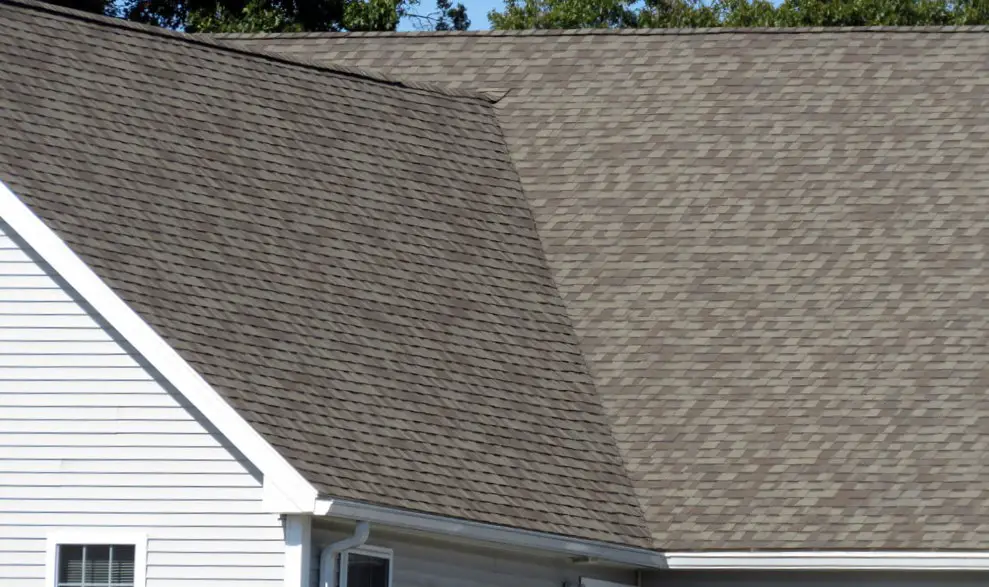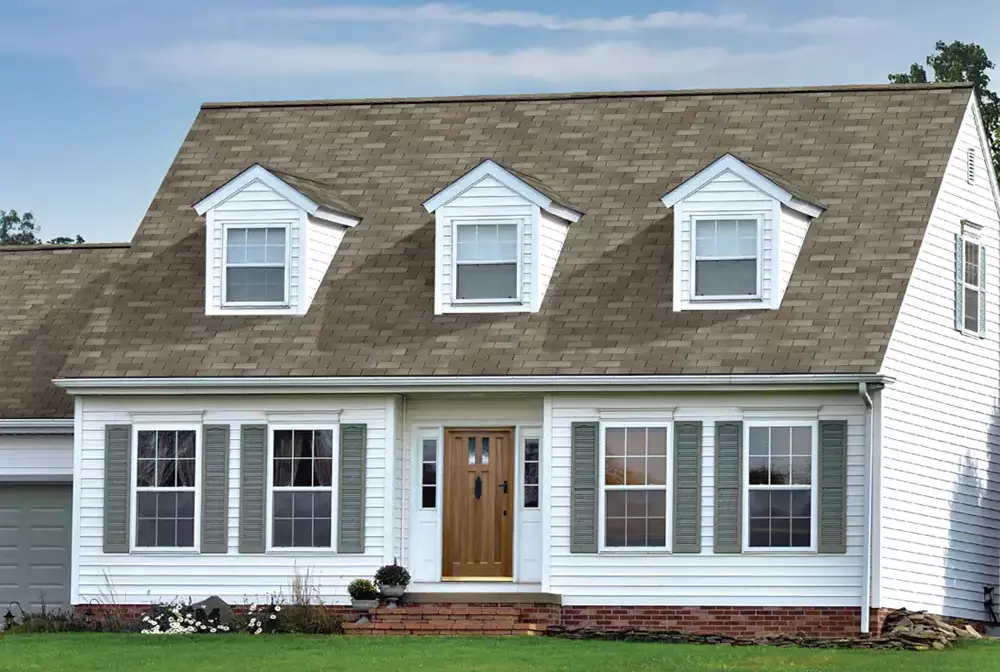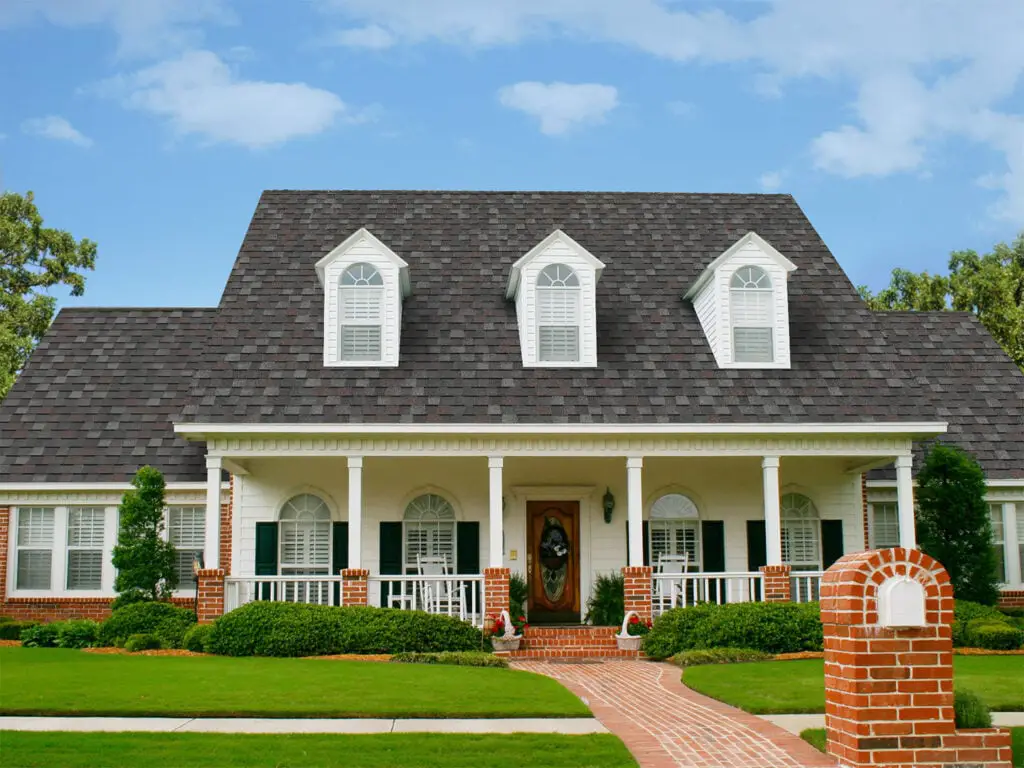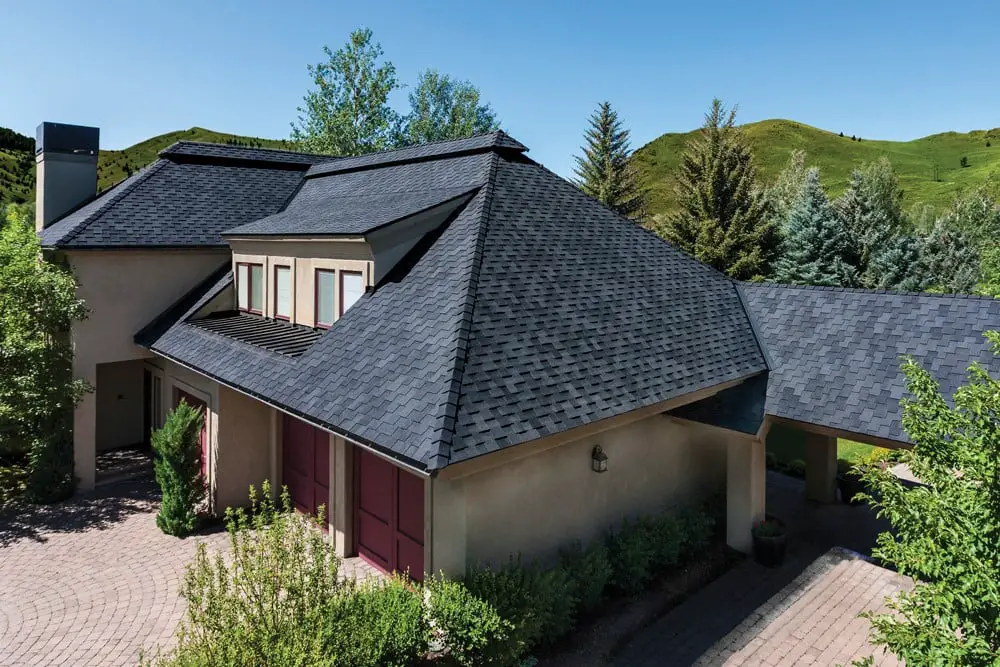Types of Asphalt Roof Shingles • Asphalt Shingle Categories
By Jack Gray, Roof Online Editor • Last updated February 1, 2023
Table of Contents
- Types of Asphalt Shingles: General Categories
- Types of Asphalt Shingles: Modern Shingle Grades
- Special Manufacturer Shingle Designations
- Related Pages

Types of Asphalt Shingles: General Categories
“Composite” vs. “Composition” Shingles
“Composition shingles” is an older term for all asphalt shingles in general. Asphalt shingles are called “composition shingles” because they contain more than one type of material, unlike shingles made from wood or slate, for example.
These materials include the asphalt and the fillers, the fiberglass or cellulosic reinforcement mat, and the protective granules. In contrast, a cedar shingle is simply cedar.
Synthetic composite shingles are made out of various polymers (plastic and synthetic rubber) and often contain recycled material. These composite shingles started to become popular in the 1990’s, and synthetic shingle manufacturers referred to their products as “composite shingles” (and still do).
The terms “composite shingles” and “composition shingles” started to become a little confusing around this time.
The term “composition shingles” for asphalt shingles is becoming outdated, and most roofing manufacturers have stopped using it, preferring to simply call their products “asphalt shingles”.
When you hear “composite shingles” today, it means synthetic composite shingles. If you hear “composition shingles”, it probably means asphalt shingles.
Fiberglass Shingles
“Fiberglass shingles” refers to asphalt shingles that use fiberglass for the reinforcement mat in the core of the shingle.
Just because a shingle is called a “fiberglass shingle”, it does not mean that the shingle isn’t made out of asphalt, or that fiberglass forms the waterproofing component of the shingle.
Fiberglass shingles are simply normal asphalt shingles these days.
Fiberglass mats were first used in the 1960’s as a cheaper alternative to organic cellulose mats for use as the reinforcement layer at the core of the shingle. Shingle manufacturers completely phased out the use of cellulose reinforcement mats during the first decade of the 21st century.
All asphalt shingles manufactured today are fiberglass shingles.
Organic Shingles
“Organic” refers to asphalt shingles made with a reinforcement mat made of organic materials.
The reinforcement mat at the core of asphalt shingles was originally and for many decades produced from organic materials – primarily cellulose from various sources such as cotton rags or wood chips.
The last major shingle manufacturer ceased organic shingle production in 2011. They don’t make organic shingles anymore.
Polymer-Modified Asphalt Shingles
Polymer-modified shingles are made with polymer-modified asphalt, also called “rubberized” asphalt. Much like the modified bitumen roofing used on flat roofs, 3% to 12% of a polymer-modified shingle is synthetic rubber, styrene-butadiene-styrene (SBS), blended into the asphalt during production.
Polymer-modified shingles perform better in extreme cold, high winds, and hailstorms. They are more resistant to cracking or tearing than regular asphalt shingles. Most “impact resistant” shingles are made with polymer-modified asphalt.
Although roofing manufacturers tend to reserve polymer-modified asphalt for their top performance shingles, any grade of shingle can use it, and there are 3-tab shingle lines that are polymer-modified.
Types of Asphalt Shingles: Modern Shingle Grades
3-Tab Shingles
3-tab shingles are generally the lowest-tier shingle lines. 3-tab shingles are strip shingles with cut-outs that make the shingle strip look like three smaller individual shingles (the “tabs” of the shingle).
3-tab shingles consist of one single layer of shingle material: a reinforcement mat sandwiched between two layers of asphalt with surface granules on the top side.
For a long time, 3-tab shingles had a standard length of 36 inches and a standard width of 12 inches. Roofing manufacturers have recently started to change this, however, and a length of one meter (a little more than 39 inches) is becoming more common.

Strip Shingles
Strip shingles, also called “3-tab” shingles today, are the most basic type of asphalt shingles.
The term “strip” was first used because the individual shingle unit was manufactured in a strip that connected what appeared to be two or three separate shingles.
Strip shingles were first produced in the 1920’s. Before this, asphalt shingles were actually produced as single shingle units, about a foot wide.
Architectural Shingles
Architectural shingles are laminated shingles. They are called “architectural shingles” because the top layer of the shingle can be used to give the shingle desirable aesthetic or “architectural” effects.
Cut-outs and overlaps in the top layer of the shingle can give the shingle a “profile” that makes the shingle look thicker and more textured, with high definition and sharp shadow lines.
The terms “architectural shingles”, “dimensional shingles”, and “laminated shingles” are used interchangeably.
Dimensional Shingles
Basic dimensional shingles are generally the mid-tier shingle lines. Dimensional shingles are the most popular type of roofing shingles installed in North America today.
Dimensional shingles are laminated shingles: they are manufactured as a double-layered (and very rarely triple-layered) product. The multiple layers in the shingle give the installed shingles a multi-dimensional appearance, implying sturdiness and quality.
Dimensional shingles are generally thicker, heavier, and longer-lasting than strip shingles, with better warranties.
The terms “dimensional shingles”, “architectural shingles”, and “laminated shingles” are used interchangeably.

Luxury Shingles
These are the best roof shingles as far as performance goes. Luxury shingles are the top-tier shingle lines from most manufacturers today.
Luxury shingles are the thickest, highest-quality dimensional, architectural shingles.
The term “luxury shingles” is used interchangeably with “premium shingles”. “Luxury” shingles and “premium” shingles are the same thing.
Premium Shingles
Premium shingles are the top-tier shingles. Premium shingles are the thickest, highest-quality laminated or architectural shingles. “Luxury” shingles and “premium” shingles are the same thing.
They are often designed to mimic other, more expensive roofing materials such as natural slate or cedar shake. This heightened curb appeal makes them stand out from other asphalt shingles.
Most premium shingles also have a high impact-resistance rating. Premium shingles typically cost the most, last the longest, and have the best warranties.

Special Manufacturer Shingle Designations
AR Shingles
“AR” stands for “algae-resistant”. Several manufacturers add the letters “AR” after the name of some of their the shingle lines, like “Vista® AR” by Malarkey.
“AR” means that the shingles are manufactured using algae-resistant granules. This helps prevent the unattractive black streaks that form on some roofs due to algae growth.
If the shingles have “Scotchgard™” after the name, it also means they are algae-resistant and use the trademarked Scotchgard granules from the 3M corporation.
IR Shingles
“IR” stands for “impact-resistant”. When you see “IR” after the name of a line of shingles, it generally means that the shingles are UL-certified for Class 4 impact resistance, the highest impact resistance rating.
Most (but not all!) IR shingles are made with polymer-modified asphalt.
About the Author
Jack Gray is a principal roof consultant and vice president at the Moriarty Corporation, an award-winning building enclosure consultant firm founded in 1967. He is also the editor of the Roof Online website.

Mr. Gray has worked in the roofing industry for over 25 years, with training and practical experience in roof installation, roof inspection, roof safety, roof condition assessment, construction estimating, roof design & specification, quality assurance, roof maintenance & repair, and roof asset management.
He was awarded the Registered Roof Observer (RRO) professional credential in 2009.
He also served as an infantry paratrooper in the 82nd Airborne Division and has a B.A. from Cornell University. Read full bio.
Related Pages
64 Types of Roofing • Complete List of Roofing Materials
Asphalt Shingle Roofing: Useful Information Guide
Best Roof Cement Guide • Top 5 Roof Cement Products
Best Roof Repair Tape • Top 5 Roof Sealant Tapes
Best Roof Shingles Guide • Top 7 Shingle Brands
How Long Does a Roof Last? • Roof Lifespan for 49 Roof Types
How Much Does an Asphalt Shingle Roof Cost?
How to Replace a Missing Asphalt Shingle